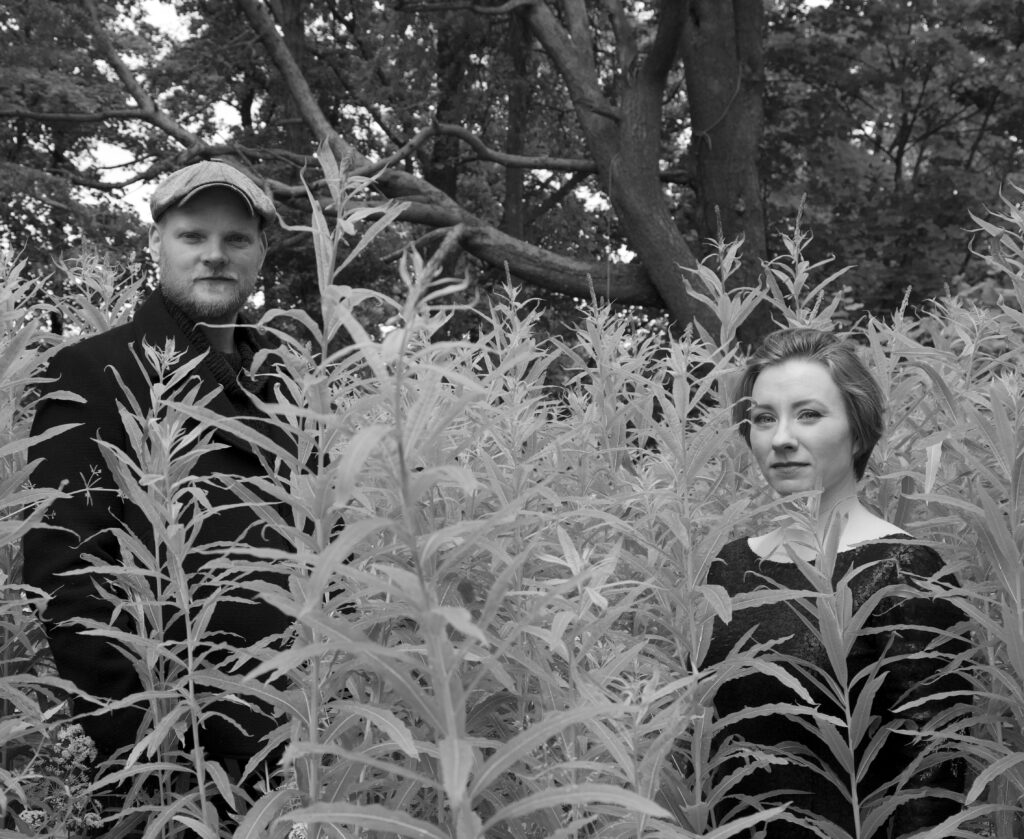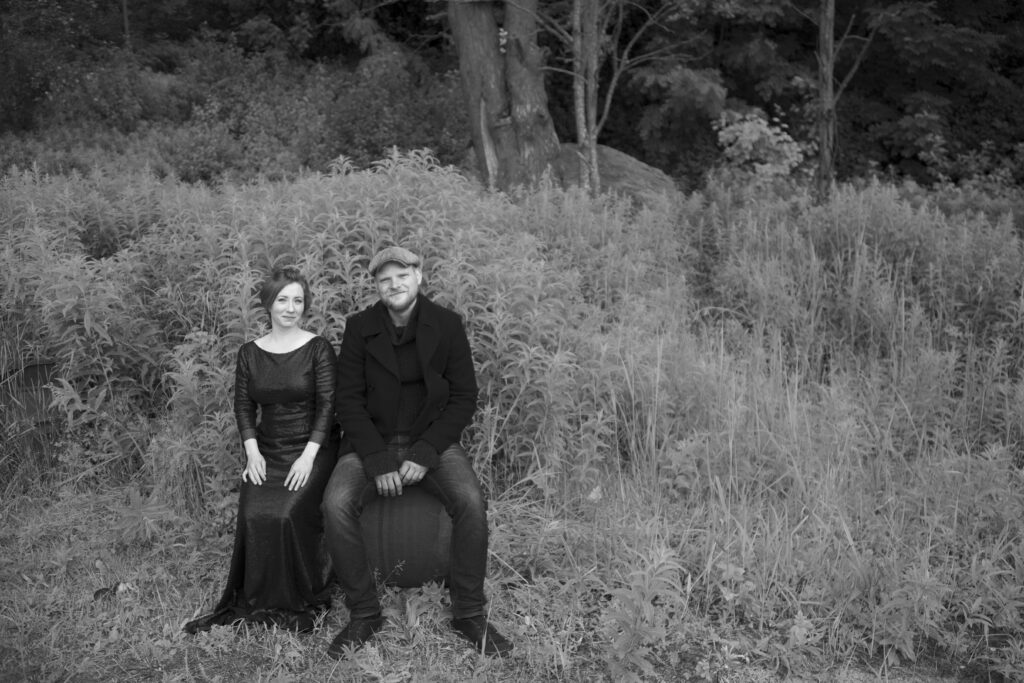Estonian soprano Maria Valdmaa and Finnish viola da gamba player Mikko Perkola collaborated on performing a selection of songs from John Forbes’ “Songs and Fancies”, published in Aberdeen in 1662 and the first book of secular music published in Scotland in the 17th century; the record was featured on BBC Radio 3’s classical show and was presented with a concert at the Arvo Pärt Centre in Laulasmaa, Estonia.
Soprano Maria Valdmaa has received international acclaim as a performer of both early and contemporary music. Educated at the Royal Conservatory of The Hague, where she obtained her bachelor’s and master’s degrees in early music and historical performance practice, Valdmaa is frequently engaged as a soloist for the large-scale works of the Baroque era across Europe.
Valdmaa is noted as an interpreter of Arvo Pärt’s music, having performed as a soloist in Pärt’s “Adam’s Passion” at Berlin’s Konzerthaus with the Estonian Philharmonic Chamber Choir and conductor Tõnu Kaljuste, with whom she has enjoyed a close collaboration.
At the end of 2020, Valdmaa and the Finnish musician and viola da gamba player, Mikko Perkola, recorded an album – “Aberdene 1662” – of the 17th century Scottish songs published in John Forbes’ collection, “Songs and Fancies” (Aberdeen, 1662). The record, available on CD, on Spotify and Bandcamp, has already been played on BBC Radio 3 and was be presented with a concert at the Arvo Pärt Centre in Laulasmaa, Estonia, on 13 November.

At the concert, Valdmaa and Perkola delighted the Estonian audiences with an exquisite combination of Scottish and English songs from the past as well as fresh improvisations. The performance alternated between Scottish secular songs printed in John Forbes’ collection “Songs and Fancies”, English melodies popular already at that time and Perkola’s captivating improvisations on a viola da gamba.
Estonian World caught up with Maria Valdmaa to find out more about the recording of Scottish songs and her life as a globe-trotting soprano.
Where did the idea and inspiration for “Aberdene 1662” come from?
The idea took a while to develop.
First, I met Mikko in a project where I was singing early 17th-century Italian songs. He was accompanying me there on a viola da gamba. I had never heard anyone singing with a bass instrument alone without a harpsichord. To draw a parallel, it was as if Elton John would suddenly accompany himself on a bass guitar and ditch the band altogether. This setup was so refreshing that I could not let go of the idea of creating a whole programme just for the two of us.
Much of the known repertoire was from Italy and France. But I wanted our programme to reflect the temperament of the Nordic people and show the full sound palette of Mikko’s wonderful instrument. I looked into the music played in Swedish and Danish courts in 1600, but with no results. Then, on a recommendation of a friend, I found a collection of songs from Aberdeen, Scotland. Great, that’s quite Nordic, I thought!
This collection had been neglected by performers, perhaps because the book – John Forbes’ collection “Songs and Fancies” – only contains melody lines and no accompaniment. But for us, that suited very well because Mikko is a marvellous improviser – in these songs, he can just let his imagination fly free.

Why Aberdene 1662?
The music on this album is from “Songs and Fancies” (1662), a book of songs published in Aberdeen by John Forbes, a printer to both the university and the town. Forbes’s collection was the first – and, in fact, only – collection of secular music to be printed in Scotland during the 17th century.
One of the remarkable features of the “Songs and Fancies” is in the way it blends two languages – with songs in both Scots and English. Although the two languages became increasingly close from the early eighteenth century onward, in the mid-seventeenth century they would have been regarded as two recognisably different languages.
The music is by anonymous Scottish authors and English composers, whose fame had reached Scotland – such as John Dowland and Thomas Campion.
Was it a difficult album to record?
The recording process itself was straightforward and fast. We had the programme ready – I had spent a good month skimming the collection of around 70 songs: selecting the songs and ordering them in a way that it would make sense as a whole.
For the recording, we checked the duration of the pieces, added some material, rehearsed intensively with Mikko – and then spent three days at the Arvo Pärt Centre in Estonia recording the music. I could not have wished for a better location–the special aura of the centre added to the atmosphere of the disc, I am sure of it.
What took a lot of work was all the organisational matters around. We did all this during the first phase of COVID-19 lockdowns, so we ran into bizarre obstacles. For example, we could not travel to have the photos taken or had no access to research materials in libraries.
I had a great team of people around me: Kaire van der Toorn-Guthan, who designed the CD booklet; Toomas Volkmann, who took the photos; David Lee wrote beautiful liner notes; and Peeter Vähi from Estonian Record Productions kept his eye on the production. And Mikko – it would not have been the same without his musicianship and never-failing enthusiasm.
What meaning does the recording have for you?
Working on the programme with Mikko has been an exploration of sound and atmosphere, a wonderful creative journey – I think this is the most valuable aspect for me. But also, I have always been drawn to music that has been forgotten or neglected. So it makes me happy that we have been able to give these songs ‘a voice’, a new life.
I understand that even the Scots themselves have not recorded songs from John Forbes’ “Songs and Fancies” before?
That would not be entirely true. Many of the songs in the collection were very popular at the time, and of course they were available in other sources. This means some of these songs are well known to people also today. But indeed, to our knowledge we have recorded the first CD featuring music from Forbes’ collection.

Are you happy with the result and what has been the feedback so far?
I am happy with the album, absolutely. It was a huge learning curve, and therefore even more satisfying. I was amazed how much support we gathered already before the album release, during our crowdfunding campaign. And after, the feedback has been heart-warming, both from critics and audiences.
You studied, lived and worked in the Netherlands for many years. How does it compare with other places?
The Netherlands is one of the places where it is possible to work as a Baroque musician full time.
The Hague is also very well connected to the rest of Europe. That allowed me to work with ensembles in Belgium, Germany, Italy, France, Denmark, England, Scotland, and even the Czech Republic. These groups tour all over the world, so the whole experience has been invaluable really.
On the other hand, the scene is very competitive and can create a fair amount of stress. Also, I found it hard to come to terms with the business-like approach in the creative sector there.
After being away from Estonia for 12 years, you are now again based here. What is it like working in Estonia again?
I am happy to be back home – back to my roots, and I am eager to see how I can now blend what I learned abroad, with the possibilities here.
In the Netherlands, many of us, musicians, were leading an almost nomadic lifestyle, going from one project to another. Here, life is less hectic.
Also, I got used to having so many highly skilled period musicians around me in the Netherlands. In Estonia, we have a well-established classical and choral music tradition – but Baroque music, however, is still growing its audience. And because Estonia is a much smaller place, we need to be resourceful in bringing our ideas on stage. Perhaps this is the reason why I see a lot of curiosity and out-of-the-box thinking around me here.

What have been your most memorable performances so far?
From the top of my head, the first three would be singing Bach’s “John’s Passion” at London’s Royal Albert Hall for the BBC Proms, Arvo Pärt’s “Stabat Mater” in New York – at a big symposium dedicated on Pärt’s music – for the church full of people very passionate about his work, and Kaija Saariaho’s “Innocence” at the 2021 Aix-en-Provence Festival in France.
At “Innocence”, my idols, Magdalena Kožená (a Czech mezzo-soprano – editor) and Sandrine Piau (a French soprano – editor), sang so close to me that I could observe every breath and little detail – this was very special.
I would also like to bring out the first concert I sang, after half a year of silence due to the pandemic. It was Handel’s “Theodora” in 2021 Haapsalu Early Music Festival in Estonia. I felt there on stage as if I was a phoenix risen from the ashes.
What are your future plans with Aberdene 1662?
We want to bring this programme to audiences abroad so we are looking into options of organising a tour. At least, we should go to Aberdeen!
Cover: Mikko Perkola and Maria Valdmaa. Photo by Toomas Volkmann.

